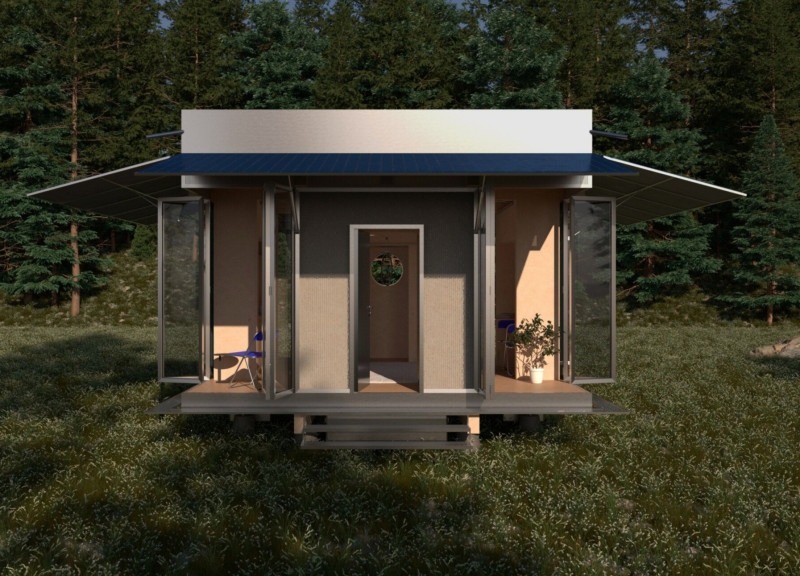5 key facts about this project
At first glance, the project reveals a sensitive integration with the surrounding landscape. The careful placement of the building maximizes natural light and offers views that engage with the outdoor scenery. The landscape itself plays an integral role in the overall design, as the project promotes a symbiotic relationship with its environment, fostering a sense of continuity between the natural and built forms. This creates an inviting atmosphere that encourages interaction among users and visitors, embodying the spirit of community engagement.
A notable aspect of the design is the material palette chosen by the architects. Using locally sourced materials, including reinforced concrete, sustainably harvested timber, and high-performance glass, the design exhibits a commitment to environmental responsibility. This selection not only enhances the project’s sustainability credentials but also helps to root it in its geographical context. The warm tones of wood contrast gracefully with the cooler tones of concrete and glass, offering a balanced aesthetic that is pleasing to the eye while providing durability and low maintenance.
The architectural design reflects a modern sensibility while respecting traditional elements found in the vicinity. This interplay between contemporary and contextual references ensures that the building feels both innovative and familiar. The roofline, for instance, features gentle slopes that evoke local architectural vernacular without compromising modern efficiency in water drainage and insulation. This design choice demonstrates an understanding of climate responsiveness, ensuring that the building is both practical and adaptable.
Throughout the structure, an emphasis on openness and transparency is evident. Large fenestrations allow for unobstructed views and maximize daylight, fostering a connection between the interior spaces and the exterior landscape. The open-plan interiors feature flexible spatial arrangements, catering to the various functions that the building is intended to accommodate. This adaptable design facilitates not only everyday use but also special events, showcasing the versatility that modern architectural design can achieve.
Unique design elements include green roofs and living walls, which are strategically incorporated to promote biodiversity while enhancing the building’s thermal performance. These features serve as both aesthetic enhancements and functional components, contributing to the overarching sustainability goals of the project. By incorporating eco-friendly technologies and materials, the design aims to minimize energy consumption and reinforce the project's commitment to environmental stewardship.
The careful consideration of acoustics within the project further elevates its design quality. Sound-absorbing materials are employed in key areas to enhance the auditory experience, ensuring that spaces intended for conversation and interaction remain comfortable and inviting. This attention to detail highlights the architects’ understanding of user experience, reinforcing their commitment to creating not just a building, but a space where community members can thrive.
In terms of technological integration, the project is outfitted with smart building systems that enhance its efficiency and user comfort. Advanced climate controls, energy monitoring systems, and renewable energy integration are seamlessly woven into the design, reflecting cutting-edge architectural ideas that align with contemporary sustainability practices.
Ultimately, the project stands as a testament to effective design principles, merging form, function, and sustainability. Its thoughtful integration with the landscape, meticulous material selection, and innovative spatial configurations collectively contribute to a dynamic architectural expression. Readers are encouraged to explore further aspects of the project presentation, including architectural plans, architectural sections, and detailed architectural designs, to gain comprehensive insights into the layered compositional elements that define this remarkable undertaking. This investigation will deepen the appreciation for the various architectural ideas that influence both function and aesthetic in contemporary design.


 Michele Fuschini
Michele Fuschini 























